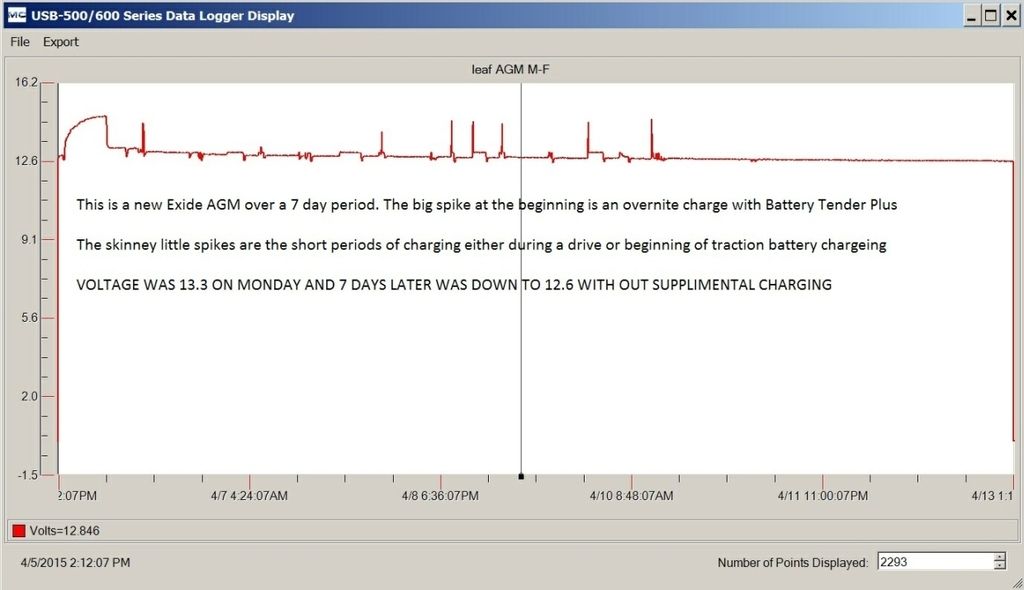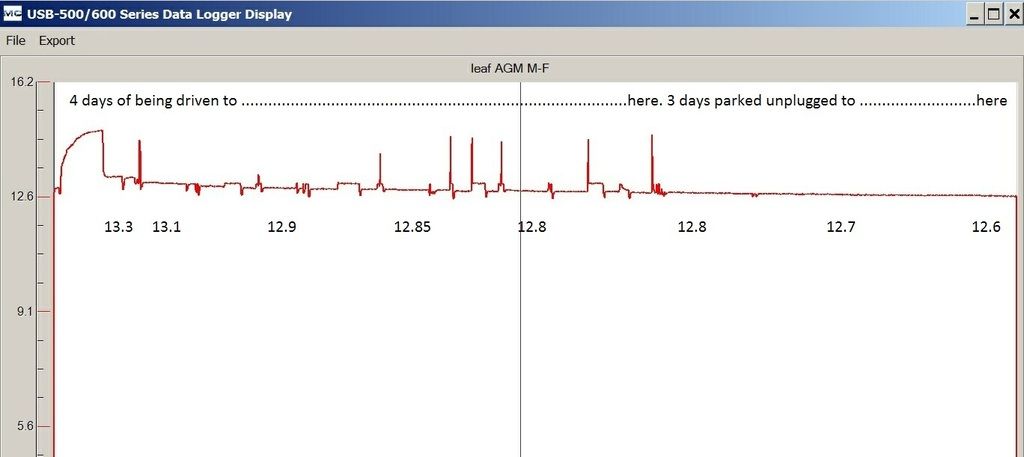Bob said:
You specifically called out MY2011/2012. I suspect MY2013 is the same. Do you have any reason to believe that MY2013+ charges the 12V battery differently than the MY2011/2012?
No. In fact, it seems there may be bugs in the MY2013s and later that occasionally causes the battery to be drained, which makes matters even worse.
Bob said:
Do you have a general rule of thumb as to what no-load voltage is too low or how often to externally charge the 12V battery?
Not really, since you can't learn very much from a single voltage measurement. I will say that if you are seeing resting voltages (hood up, sitting for 30 to 60 minutes before measuring) of 12.2V or lower, then your battery is at a low SOC and likely is headed for trouble. If you see something below 12V, then it really is time to take some sort of action with your battery (and there are many different routes you can take).
But OP and I are looking at something a bit more interesting than just a single voltage measurement. We are looking at how the voltage drops over time. Since I have a baseline from a couple of years ago, I can compare to see if my battery is performing the same, better or worse than it did at that time. Right now it looks better! I'm pleased that the battery is close to full after sitting for two full days, even if the charge immediately prior came from an external charger.
Bob said:
I have a Battery Tender Plus and can clamp it on any time I like but wasn't planning to open the hood and charge the 12V battery every night when I drive the car daily.
A while ago, I bought a
BatteryMinder On-Board Desulfator OBD-12 to install on the LEAF. Once I received it, I decided not to install it for the following reasons:
1) It only desulfates when the battery is above 13.5V, which is somewhat rare on the LEAF (as you can see in 69800's latest plot). (It would be great if this thing pulsed above 13.0V, but that would cause some battery types to get discharged when just sitting.)
2) The negative ring terminal is too small to fit over the ground lug on the DC/DC converter in the MY2011/2012 LEAF. Plus, the ground lug has a captive washer, meaning you MUST put the ring terminal between the built-in washer and the DC/DC converter, which gave me pause WRT possibly making the ground connection less effective.
Anyway, I'm again thinking of installing this unit in the LEAF. The reason is that I have, on occasion, seen the LEAF dwell at 14.4V for longer than normal when the traction battery is charging. The hope is that the pulsing would minimize the hardening of lead sulfate by breaking it up more frequently. If I can figure out how to get it installed and working property, I'll let everyone know how things go. (Unfortunately, it will be difficult to determine if this thing is helping or not...)


